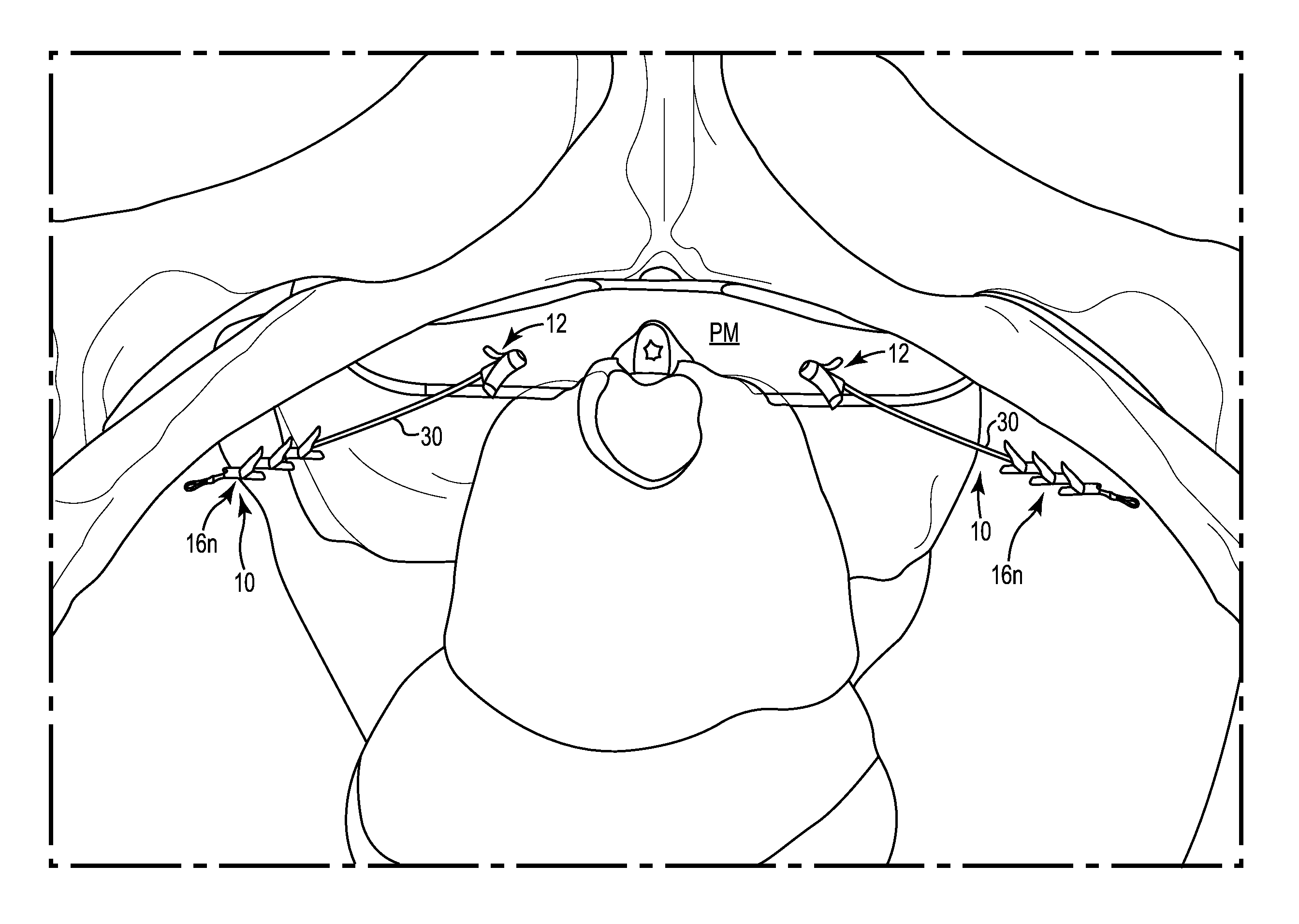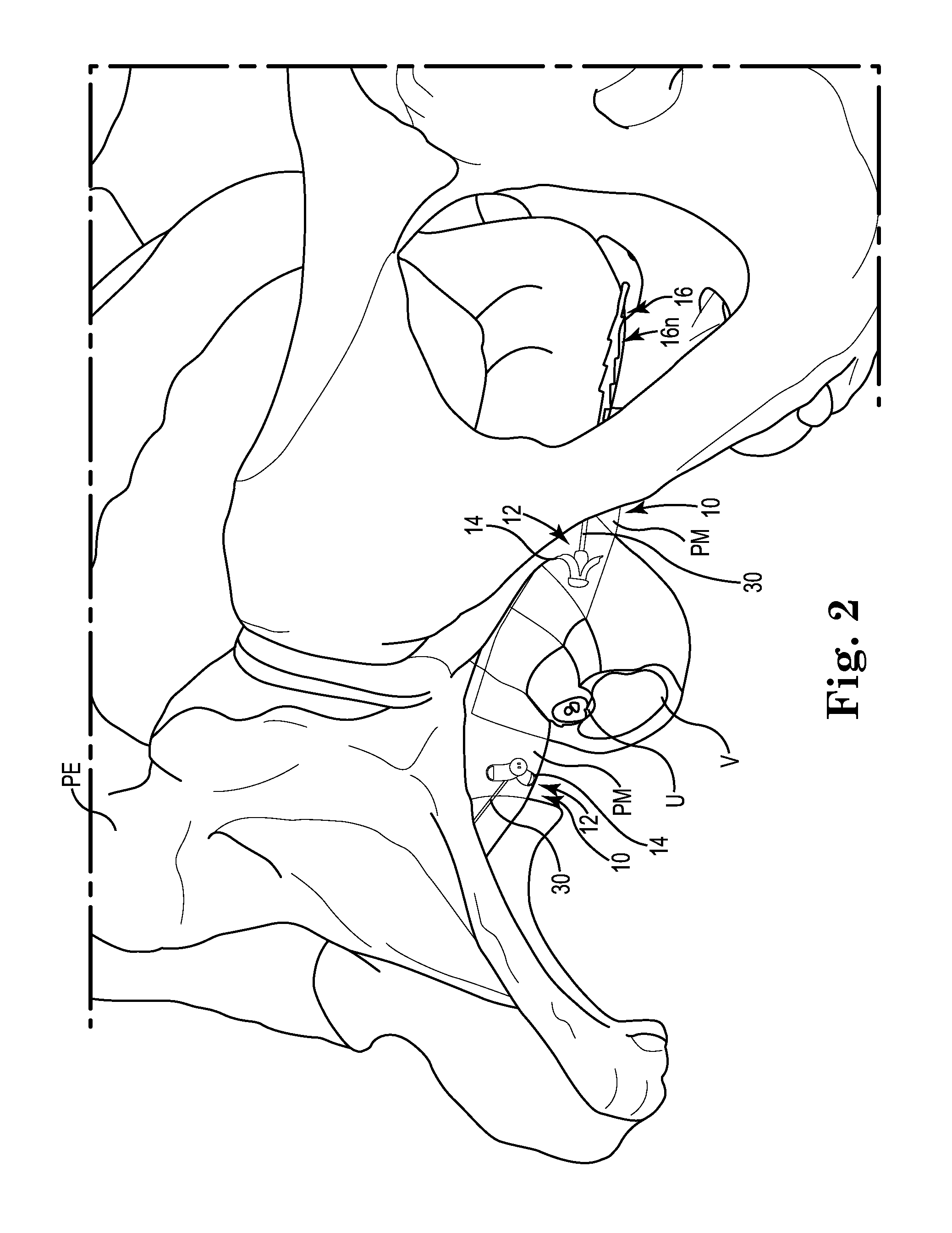Pelvic implant system and method
a technology of pelvis and implants, applied in the field of pelvic implant systems and methods, can solve the problems of incontinence, type of incontinence, functional incontinence, etc., and achieve the effects of reducing or eliminating the exposed material, reducing the risk of infection, and reducing interference with sexual activity
- Summary
- Abstract
- Description
- Claims
- Application Information
AI Technical Summary
Benefits of technology
Problems solved by technology
Method used
Image
Examples
Embodiment Construction
[0059]FIG. 1 shows a schematic view of relevant portions of the female pelvic region, and the urinary and reproductive system, including the pelvis PE, vagina V, uterus UT, urethra U, bladder B and the deep clitoral vein C. Further, a portion of the perineal membrane PM is shown at the midurethra / distal location, providing a viable paraurethral target for stabilizing or controlling the position and movement of the urethra to assist in restoring continence.
[0060]Embodiments of the present invention can include apparatus and methods for treating urinary incontinence, fecal incontinence, and other pelvic defects or dysfunctions, in both males and females using one or more lateral implants to reinforce the supportive tissue of the urethra. One or more implant devices 10 are configured to engage and pull (e.g., pull up) or reposition support tissue (e.g., paraurethral), such as the perineal membrane, uterovaginal fascia, endopelvic fascia, or other anatomical features at which connective...
PUM
 Login to View More
Login to View More Abstract
Description
Claims
Application Information
 Login to View More
Login to View More - R&D
- Intellectual Property
- Life Sciences
- Materials
- Tech Scout
- Unparalleled Data Quality
- Higher Quality Content
- 60% Fewer Hallucinations
Browse by: Latest US Patents, China's latest patents, Technical Efficacy Thesaurus, Application Domain, Technology Topic, Popular Technical Reports.
© 2025 PatSnap. All rights reserved.Legal|Privacy policy|Modern Slavery Act Transparency Statement|Sitemap|About US| Contact US: help@patsnap.com



